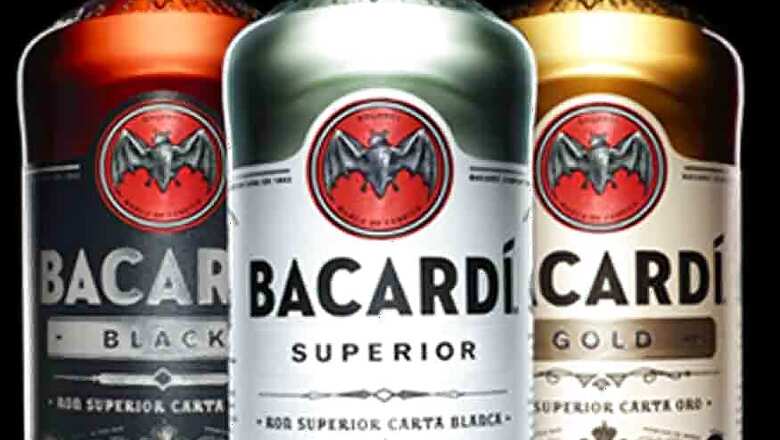
views
 Will the Soul Ever Return to the Body?
Will the Soul Ever Return to the Body?
As the era of Fidel Castro teetered towards its end, that was the million dollar question resonating in the hearts of rum aficionados around the world.
There is the rum, Bacardi, which we all know. There is this exotic country, Cuba. The drink was born centuries ago in the sugarcane plantations of the beautiful island country.
But the happiness did not last forever. The day came when the soul had to leave the body with much anguish.
The revolutionary leader Fidel Castro, who stormed to power dethroning the Cuban dictator, Fulgencio Batista, saw red in letting private industries run free in a communist country.
But don’t assume that the rapport between Castro and Bacardi had never been sweet. When Castro was fighting against Batista, the patriotic Bacardis who were deeply engrossed in Cuban social and political institutions cheered him on.
But the relationship turned sour after the honeymoon, after the fall of Batista, after the Castro regime formed its government.
Fidel meant business, and his business was to smother all capitalist ventures. In one swift move, he nationalised all sugar mills and other private initiatives in Cuba. Bacardi felt the heat of the red.
The company was now left with few friends and options.
On October 14, 1960, Cuban national radio announced the doom message, the takeover of a company built painfully by a family. The announcement was followed by national marines crashing into Bacardi’s office.
Everything was against Bacardi but for one mistake the communist authorities made. Their marines stormed into the wrong building, the wrong city — Havana.
Meanwhile, at Santiago where Bacardi’s headquarters and production plant was situated, all was calm outside. Inside, the loyal staff of Bacardi was busy with serious business. A few minutes later, the job was finished; the officials walked out one by one, with a tense smile. They had successfully destroyed the genetic code of Bacardi rum — the last of the yeast cells, that particular breed found 150 years ago from the roots of a sugarcane plant which made Bacardi, Bacardi (only those specific yeast cells could build the unique taste of the drink after a feast on sugar).
The company had earlier slipped enough strains of the variety out of Cuba to Peurto Rico, where it was going to set up the company for future operations.
By the time the marines realised their mistake and reached Santiago, not a cell was left alive. The Bacardis saw what was coming. And they didn’t like the idea of a Nationalist Bacardi made with their yeast cells competing with their production from Peurto Rico.
Still, the new Cuba was undeterred.
It believed that it was not the brand, but the place Cuba, which sold rum the world over. The government soon set up a new distillery producing their national rum — Havana Club — in the very building, the Bacardi deserted.
Meanwhile, at Peurto Rico, Bacardi, which stood for 130 years as a one-brand company, reacted by deciding to expand its kingdom. It purchased Dewar’s Blended Scotch whisky, Bombay Saphire gin, Grey Goose vodka, Cazadores blue agave tequila etc.
Exorcised from their motherland Bacardi had now a score to settle. It had to grow hastily in order to fight against the boldest Communist government in the world. Once Bacardi successfully settled down, the company began to siphon off a considerable chunk of its revenue to achieve its one goal — the end of Communism in Cuba and their old friend, Fidel Castro.
Bacardi’s lawyers were actively involved in the drafting of Helms-Burton Act which tightened the US embargo against Cuba. Allegations were also rife that Pepin Bosche, head of Bacardi was involved in a conspiracy to bomb Cuba’s oil refineries.
Origin
There was rum in Cuba, even before Bacardi, a drink too tame for the palate and too cheap for the pocket. The Cubans drank it copiously until Facundo Bacardi Masso, a Catalan wine merchant, born in Spain in 1814 came to Cuba in 1830.
Facundo drank the rum in Cuba and couldn’t help frowning. He should give something to his new country. Why not make the drink in his mind, he asked himself. Facundo started to produce his rum by drawing fermented sugarcane juice through charcoal and leaving it in oak for a long period to mature —a hitherto unseen practice in the country.
The result was phenomenal — Cuba became the rum capital of the world.
When prohibition hit the US, postcards illustrating the Havana nightlife and Bacardi cocktails were mailed out in large numbers. Planeloads of thirsty American citizens responded and landed in Havana to test the fire water.
They fell in love with the ‘rum of the bats’ and its various avatars as cocktails.
How many of you know that it was Amelia, Facundo’s wife who threw in the image of a bat on the bottles of Bacardi? A bat means health and family union in Spanish.
Another prominent Bacardi symbol was El Coco — the lone coconut tree planted by Facundo’s son at the opening of the distillery. As its roots took hold so did a legend, “the Bacardi Company will survive in Cuba as long as the coconut palm lives…”
Then Fidel Castro came. He cut the tree with a single stroke.
(Manu Remakant is a freelance writer who also runs a video blog - A Cup of Kavitha - introducing world poetry to Malayalees. Views expressed here are personal)




















Comments
0 comment